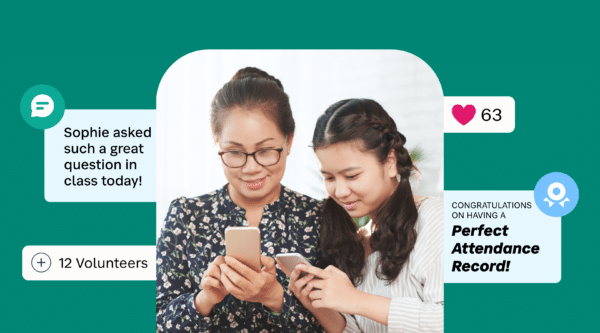

Published June 6, 2024 on eSchool News.
One surefire way to support student success? Consistent, positive family communication.
In elementary school, there’s frequent outreach. A recent report found that this wanes somewhat throughout middle school, and, by the time students reach high school, many schools subscribe to the belief that the need for school-to-home communication diminishes. The prevailing notion is that high school students are learning to be independent, therefore their home adults should be less involved.
However, data reveals a sobering reality: chronic absenteeism rates are highest in high school, with approximately one in three students missing at least 10 percent of their school days. This alarming trend jeopardizes students’ academic achievement, graduation prospects, and life outcomes. Dropping out of high school is linked to poorer health outcomes, significantly fewer opportunities in the labor market, and an increased likelihood of entering the criminal justice system.
Given the numbers, the idea that communication becomes less crucial as students age is counter-intuitive. In fact, maintaining consistent and tailored communication channels is pivotal during adolescence. Teenagers face numerous challenges–academic pressures, social dynamics, identity exploration–that can contribute to disengagement and absenteeism. Hedy Chang, executive director of Attendance Works, connects the high levels of chronic absenteeism to a broken connection between students and school.
One essential mechanism for repairing that connection is family communication. Here are some ideas for how to rebuild the relationship between home and school appropriate for high school students.
Leverage multiple communication channels
While traditional methods like newsletters and parent-teacher conferences remain valuable, incorporating popular technologies such as text messaging, social media, and mobile apps can enhance engagement and reach students and families where they are.
A recent study on adolescent loneliness suggests that light-touch, low-cost interventions focused on attendance can pay dividends. Strategies like sending families statistics about the impacts of absenteeism and collaboratively developing attendance plans have proven effective. These types of targeted communication efforts empower families as partners in prioritizing consistent attendance.
Read full article on eSchool News.
Stay Connected
News, articles, and tips for meeting your district’s goals—delivered to your inbox.





